Carousel of Progress, Anaheim (1967 – 1973)
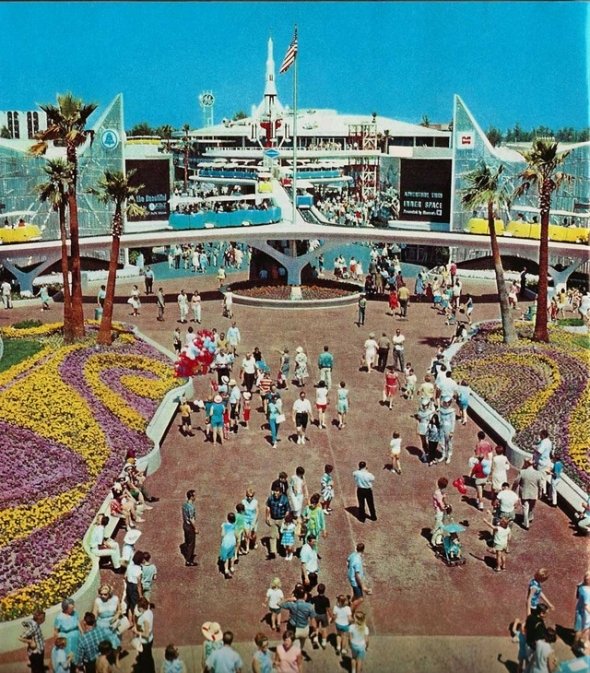
Walt Disney never lived to see the opening of New Tomorrowland in July 1967. He passed away unexpectedly from lung cancer on December 15, 1966. However, his DNA lived on in most every square foot of the revitalized land he helped shape. Perhaps the most significant icon of his spirit? The centrally-located Carousel of Progress.
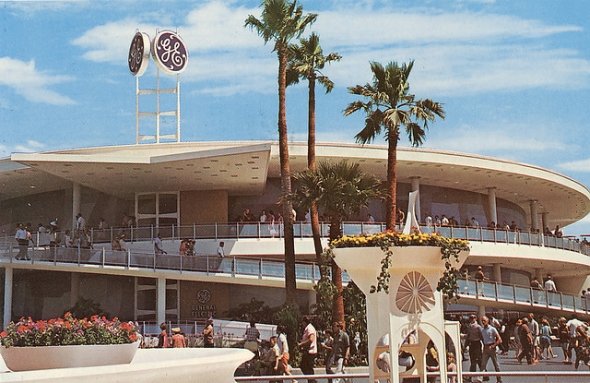
When the Carousel of Progress opened alongside Disneyland’s New Tomorrowland in 1967, it represented just one piece of the grandest redesign in Disneyland’s history alongside revered Lost Legends: The Peoplemover and Adventure Thru Inner Space.
General Electric’s sponsorship followed the now-permanent attraction to California, likely in a 10 – 12 year commitment (typical of Disneyland sponsorship). The sets and Audio-Animatronic “performers” for the attraction were all originals from the Fair re-installed in the nearly identical Carousel Theater. At the close of the show, guests would disembark and follow a curving pathway around the building to the Theater’s second floor, where they’d get a bird’s eye view of something astounding.
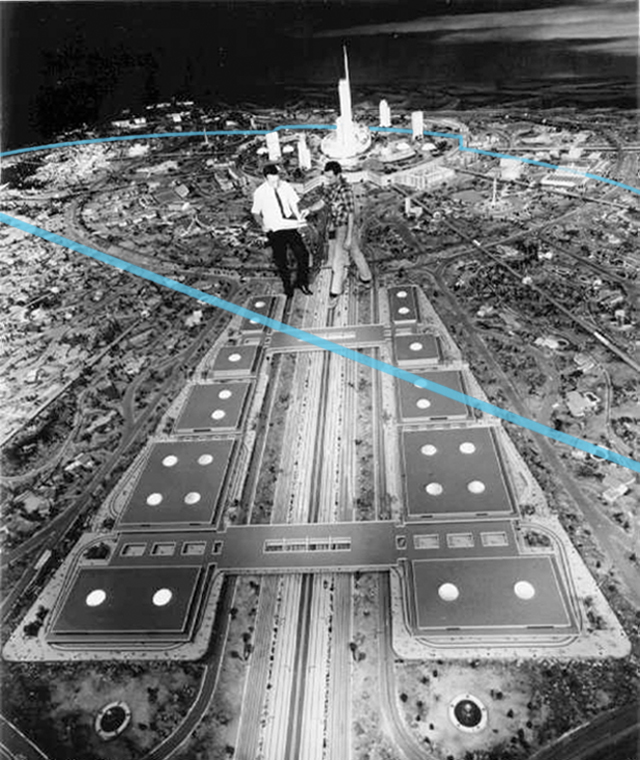
Rather than duplicating GE’s Skydome Spectacular, the redesigned finale at Disneyland offered guests an unbelievable look at the full, massive, sprawling, 6,900 square foot model of Progress City – based on Walt’s Experimental Prototype Community of Tomorrow. Guests could spend as much time as they liked on the Theater’s second floor looking out over the model and its moving cars, lit homes, and intricate details, imagining that Walt’s E.P.C.O.T may one day come to be…
While Carousel of Progress was a spectacular testament to Disney’s legacy in a New Tomorrowland shaped by – but never stepped in by – Walt himself, it had one fatal flaw: Disneyland’s guests.
Florida calls

In 1971 – just four years after the Carousel of Progress’s Disneyland debut – the brand new Walt Disney World opened as “the Vacation Kingdom of the World.” Right away, a stark contrast arose between the two Disney properties. Especially back then (but still today), an enormous percentage of Disneyland visitors were from Southern California or the adjacent states. In other words, while Disney World became an international resort destination, Disneyland remained a simple day-trip for the region, catering to generations of locals.
Which is all well and good… except that, even by the early 1970s, audiences were dwindling at the Carousel of Progress, and GE’s research suggested that 80% of visitors to their attraction were Californians, most of whom had already seen the show many times. That wasn’t a very good use of their pricey sponsorship and advertising dollars, especially while the brand new Magic Kingdom in Florida was catering to ever-rotating international audiences who would eat up GE’s advertising.
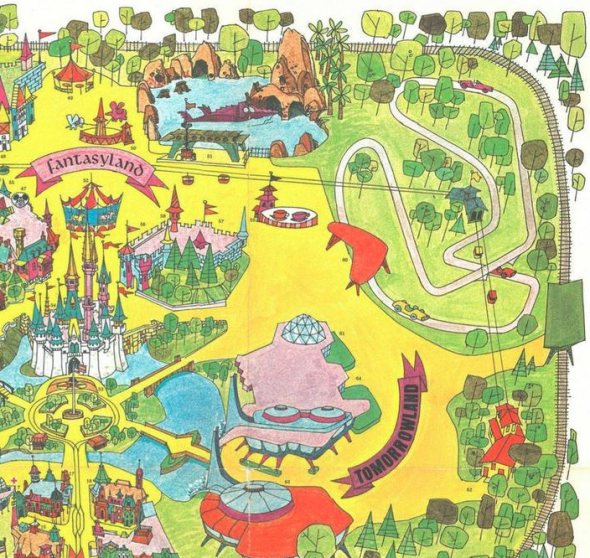
General Electric badly wanted their Carousel of Progress to return across the country and take up residence in the new Magic Kingdom where audiences from around the globe would see their product lineup. Killing two birds with one stone, relocating Carousel to Orlando would also help flesh out the park’s Tomorrowland which, when Magic Kingdom opened, was even more stark and empty than Disneyland’s had been in its own opening year.
The show closed at Disneyland on September 9, 1973, after a run of only six years…
Disneyland, A.C. (After Carousel)
Before we follow Carousel of Progress to its final home in Florida, let’s wrap up the story of what became of California’s Carousel Theater.
1. America Sings (1974 – 1988)
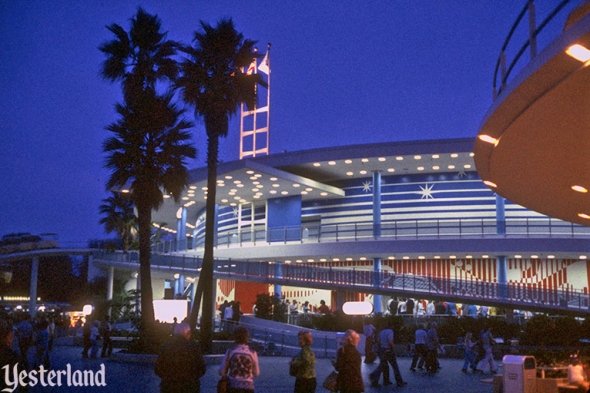
Disney intended to repurpose the revolving theater for a new show celebrating America’s bicentennial. “America Sings” opened in June 1974.
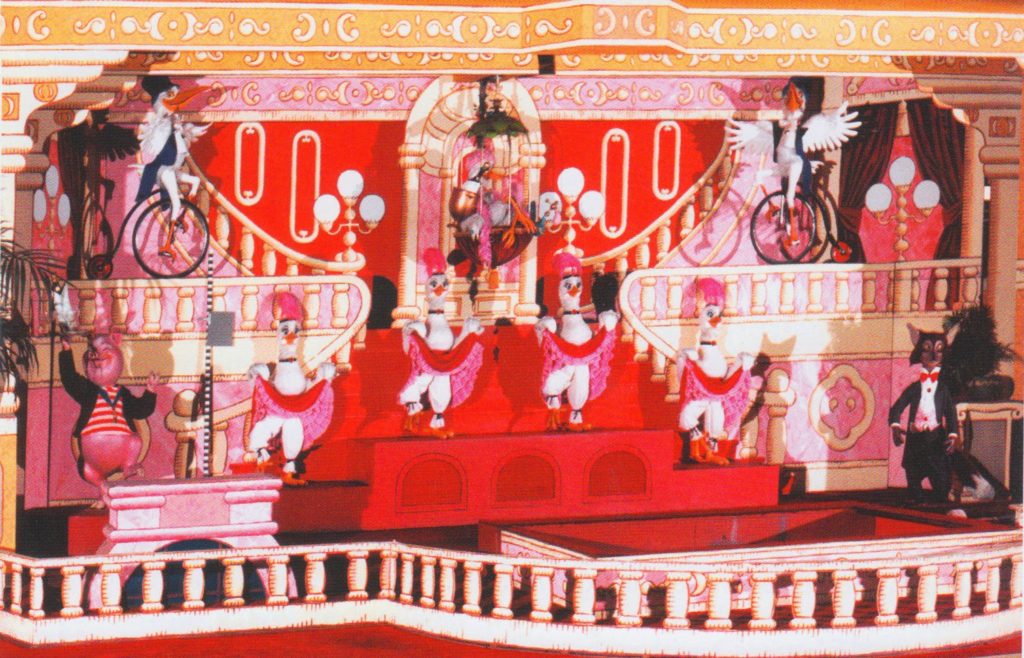
Naturally, the show re-used the Carousel Theater’s six stages and six audiences (though it did reverse the theater’s direction to counter-clockwise). A wonder in its own right, America Sings featured 115 Audio-Animatronics figures of anthropomorphic animals and, through and through, is a classic Marc Davis attraction in its own right – sort of a final installment in the series begun with the Tiki Room and expanded with the Country Bears.

Hosted by Sam the eagle and Ollie owl, the show transported guests through the Deep South, the wild West, the 1890s, and modern times with spectacular singalong presentations and Sam’s “Yankee Doodle” as the uniting song between scenes. “America Sings” was a smart re-use of the Carousel Theater, even if it didn’t quite fit in Tomorrowland. In 1986, two of the show’s singing geese quartets became trios – two of the geese were pulled and stripped to their robotic underbellies to become Droids in the queue of a Lost Legend: STAR TOURS just a few hundred feet away along Tomorrowland’s main entry (still identified by their duck feet).
Recgonize the hens and foxes in the Passholder-exclusive concept artabove? America Sings closed in April 1988 so that the remaining Audio-Animatronics could be redressed in Southern duds and installed in the under-construction Splash Mountain where they were reprogrammed to sing along to the attraction’s “Zip-a-Dee-Doo-Dah” musical score.
2. Empty (1988 – 1998)
The Carousel Theater remained closed for a decade… just one of a handful of outdated or abandoned attractions sitting in the land during its darkest period: the 1990s. Michael Eisner had plans to completely rebuild Disneyland’s Tomorrowland and turn the Carousel Theater into “Plectu’s Galactic Revue,” but the budget for the never-built Possibilityland: Tomorrowland 2055 went down the drain when Disneyland Paris did.
3. Innoventions (1998 – 2015)
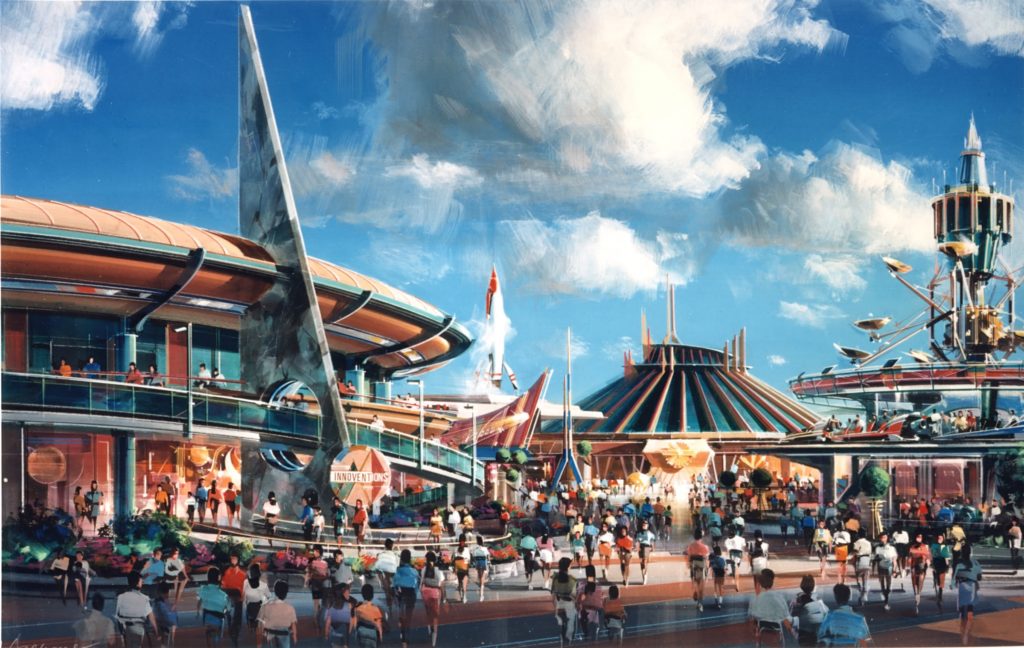
Instead of Tomorrowland 2055, the land became the Declassified Disaster: Tomorrowland 1998, drenching the land in brown, green, and bronze paint. With a green marble wedge added to the building’s exterior, the Carousel Theater became a West Coast campus of Epcot’s Innoventions. Guests entered in batches via the continuously-revolving first floor. Inside, the entire theater had been opened up, creating an outer ring of revolving “pre-shows” that then funneled guests into the stationary core and a staircase up to the second floor, with both levels littered with interactive elements.
Like its older sister – Epcot’s Innoventions – Disneyland’s version quickly became a lame duck of exhibits that didn’t receive the updating or care needed. Eventually, the second floor was more or less vacated to make way for Marvel super hero meet-and-greets. But those were practically the good ole days. If you can imagine, things have only gotten worse.
4. Star Wars Launch Bay (2015 – present)
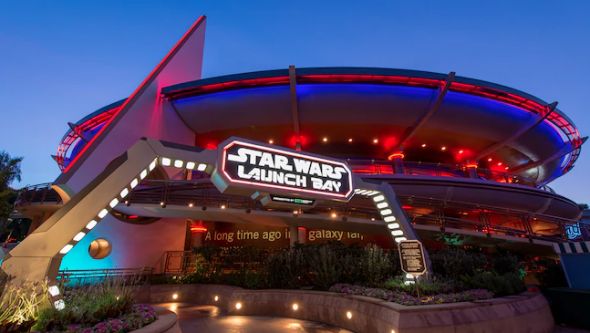
In 2015, what remained of Innoventions closed to make way for Star Wars Launch Bay, a sincerely pointless Star Wars “exhibit” / meet-and-greet space with the mismatched Marvel meet-and-greets remaining on level two… until the second story closed. Now, the desolate Launch Bay takes up the first floor, while the second is merely dark and roped off. Plus, during the transition to Launch Bay, the revolving mechanics of the building’s outer ring were apparently permanently cemented, meaning it will never rotate again… a truly sad sort of finality for a building once dedicated to moving forward.
So for Disneyland’s Carousel Theater, the only remaining question is when the building will be demolished. Launch Bay is already a waste of space, and the 2019 opening of Galaxy’s Edge very clearly made Launch Bay (and curiously, Star Tours?) redundant. There’s almost no doubt that – eventually – whatever floor-to-ceiling rebuild of Tomorrowland that comes next will see the Carousel Theater, its neighbors Autopia and the Submarine Voyage, and the Peoplemover torn out to make way for something new.
The good news is that while Disneyland’s Carousel Theater may have degraded over decades to its now-inevitable doom, the story of Carousel of Progress isn’t over…
Carousel of Progress, Orlando (1975 – present)
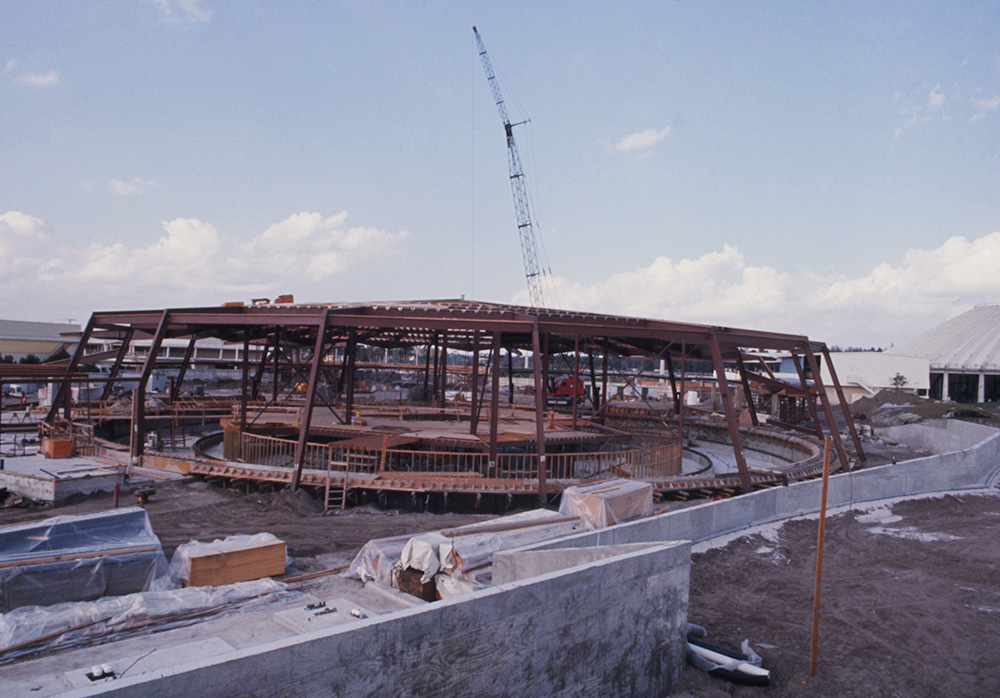
Just as the Carousel ended its Disneyland run in late 1973, construction was beginning on a replacement Carousel Theater in Magic Kingdom.
The only change? Magic Kingdom’s theater was constructed without a second story. Instead, a narrow “loft” gives the park’s also-new Peoplemover a place to circumvent the spinning theater. As there would be no space for the Progress City model, it was broken up with a small portion of it installed above the Mission to Mars theaters (most recently, home to the evicted Declassified Disaster: Stitch’s Great Escape, saturating the model with chili-dog smell), visible from aboard the passing Peoplemover.
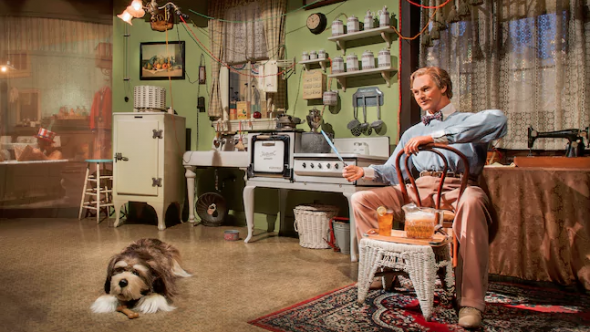
Otherwise, GE had just one request: they wanted “there’s a Great, Big, Beautiful Tomorrow” cut from the show.To their thinking, the Sherman Brothers’ song might subconsciously convince guests (er, potential GE customers) that they ought to wait to see what innovations came next before making a purchase… GE requested a new song that emphasized that now is the time to be – and to buy!
Fittingly, the Sherman Brothers scored a new theme, “The Best Time of Your Life,” promising:

Yesterday’s mem’ries may sparkle and gleam
Tomorrow is still but a dream
Right here and now you’ve got it made
The world’s forward marching, and you’re in the parade!
Now is the time; now is the best time
Now is the best time of your life
There’s so much to cheer for,
Be glad that you’re here for it, the best time of your life!
Though the new song was undoubtedly still catchy, it did (inherently and intentionally) lack some of the futurism and optimism that made Carousel of Progress – and Walt Disney – so phenomenal.
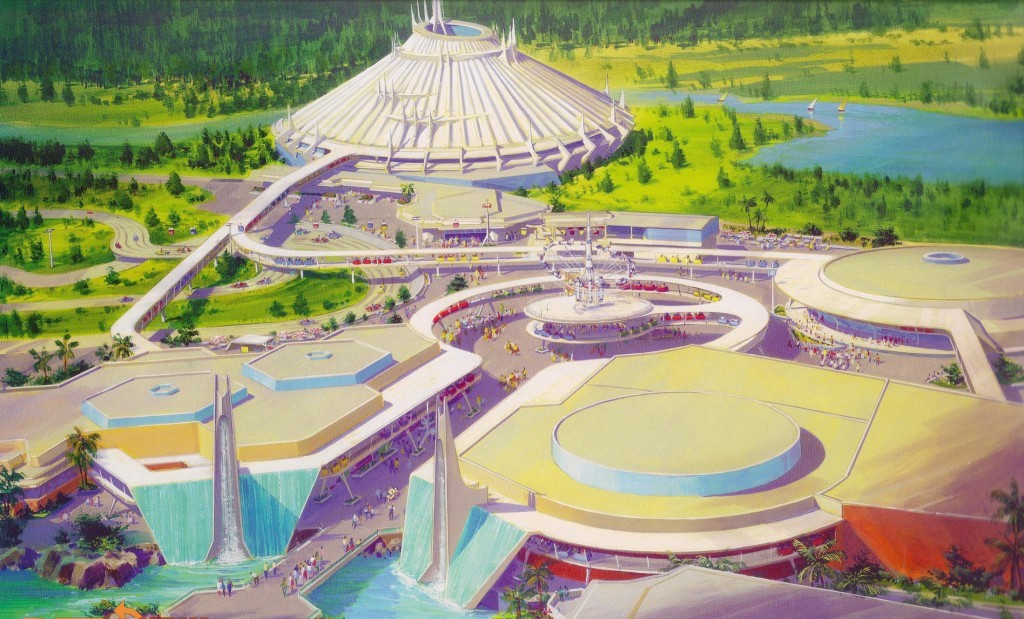
Carousel of Progress opened in the Magic Kingdom’s Tomorrowland on January 15, 1975 – the same day as Space Mountain. As part of its Orlando debut, the “Christmas 1960” finale was (naturally) updated to “New Year’s Eve in the 1970s” and Rover was given a new breed.

In 1981, the finale was updated once more to “New Year’s Eve in the 1980s” – its third upgrade.
As the ’80s continued, GE’s 10-year sponsorship of Carousel of Progress came up for renewal… and instead of continuing to support the Walt Disney original, they shifted their sponsorship to a brand new attraction that literally served as the sequel to Carousel of Progress… Yes, as the 21st century nears, we’ll take one final look to the horizon and see Disney’s brave sequel and what may lie ahead for Carousel of Progress… Read on…



